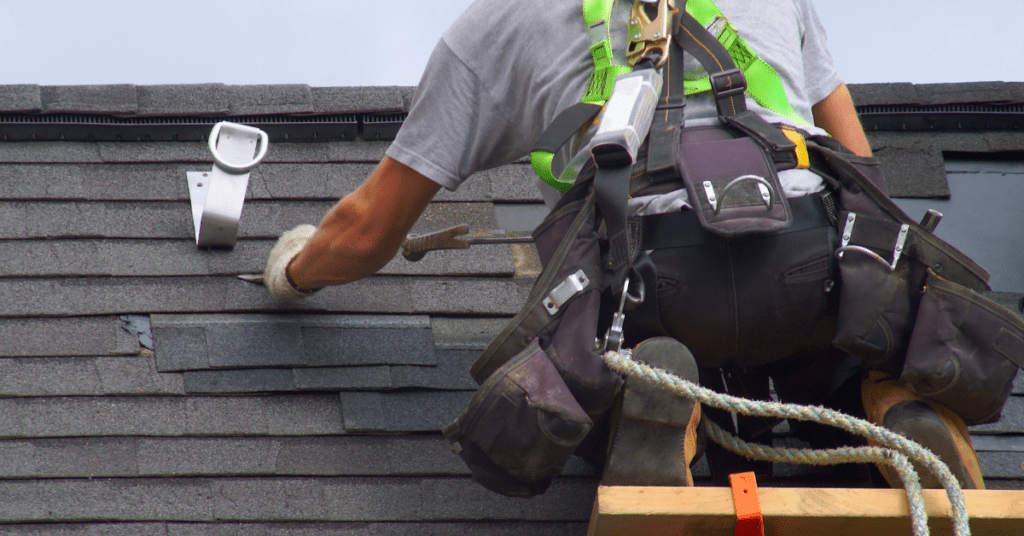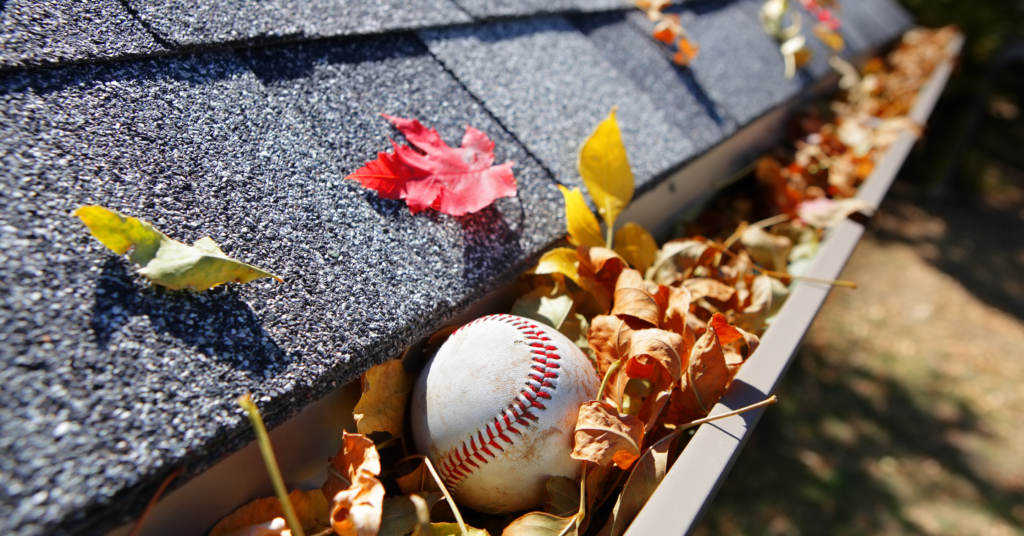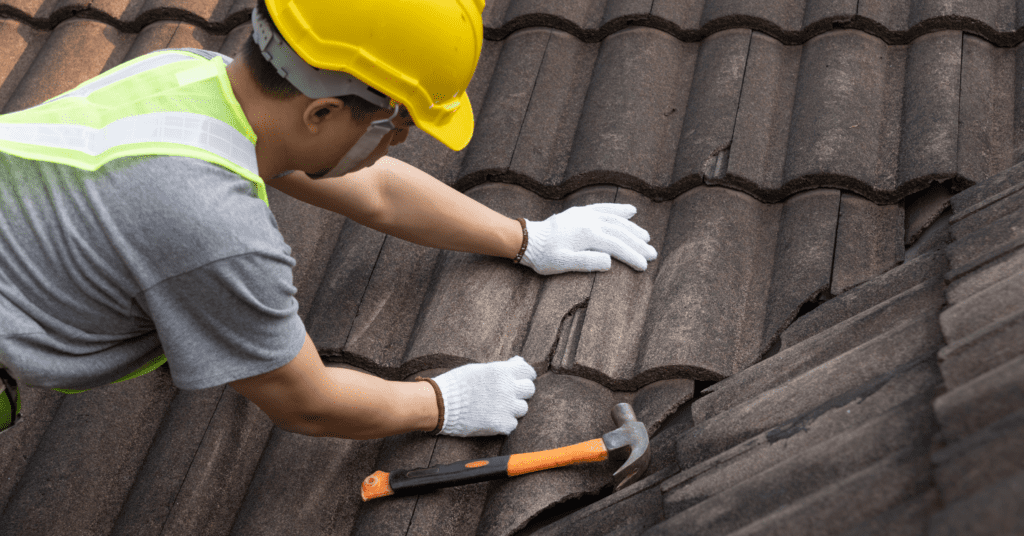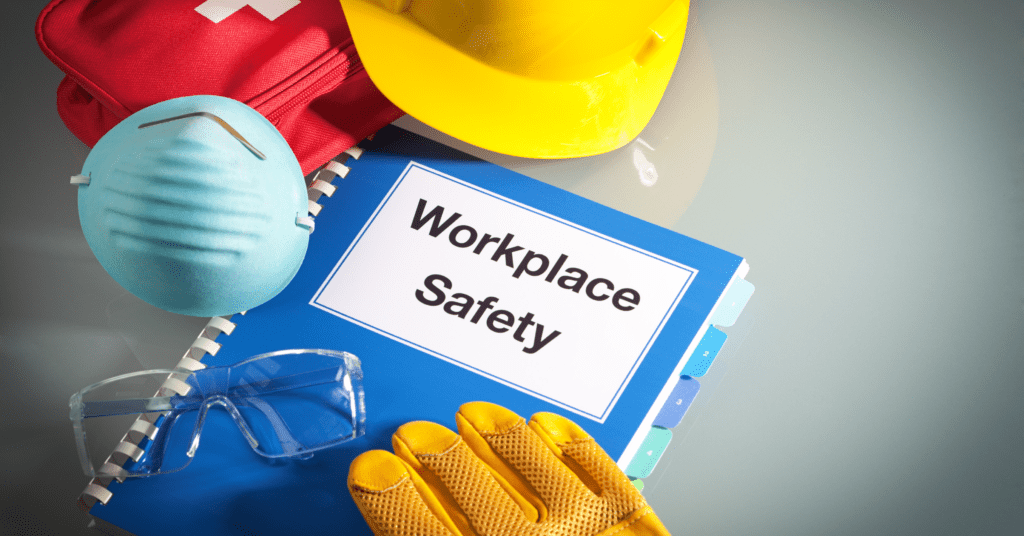How Do You Ensure Proper Safety Measures Are in Place During the Roofing Project?


Roofing projects can be complex and dangerous if proper safety measures are not followed. It is crucial for both homeowners and roofers to prioritize safety in order to prevent accidents and injuries. In this article, we will discuss the safety measures that homeowners should take prior to the start of any roofing project, as well as the safety measures that roofers should follow during the project. We will also address the potential risks involved for both the roofer and homeowner and the necessary safety equipment required. Finally, we will outline the methods that should be used to ensure safety throughout the entire roofing project.
What safety measures should homeowners take prior to the start of any roofing project?
Prior to the start of any roofing project, homeowners should take certain safety measures to protect themselves and ensure that the project runs smoothly. Here are some important steps to follow:
1. Obtain a valid manufacturer’s warranty
It is essential for homeowners to make sure they have a valid manufacturer’s warranty for the roofing materials that will be used in their project. This warranty provides protection and ensures that any defects in the materials will be covered.
2. Request a copy of the contractor’s WSBC Certificate
The contractor should provide a copy of their WorkSafe BC (WSBC) Certificate, which demonstrates that they are registered and covered by the WSBC. Homeowners should ensure that the certificate is current, as clearances are valid only until the date of the firm’s last payment, unless the firm has GoldStar clearance status that provides clearance to a future date.
3. Verify the contractor’s work-related insurance certificate
Homeowners should request a copy of the contractor’s work-related insurance certificate to ensure that potential risks are covered. The insurance should include a preset amount of liability coverage, which will protect both the homeowner and the contractor in case of any accidents or damage that may occur during the project.
What safety measures should roofers take when beginning the roofing project?
Roofers need to prioritize safety when starting a roofing project to minimize the risk of accidents and injuries. Here are some important safety measures that roofers should follow:
1. Wear the right gear
Roofers should wear flexible and comfortable clothing that allows for easy movement. It is important to avoid wearing ripped clothing, as it can easily get snagged by nails or other materials on the roof. Roofers should invest in high-quality slip-proof, steel-toe boots, safety gloves, eye protection, and always wear a Canadian Safety Association-approved helmet or hard hat. It’s not just about personal safety. Roofers also have a responsibility to protect the property they’re working on. Learn more about a roofer’s responsibilities during repair in our comprehensive guide.
2. Be aware of the forecast
Roofing is hazardous work, and attempting to repair a roof in inclement or cold weather significantly increases the risk. It’s particularly challenging to handle roofing in inclement weather. For instance, emergency roofing repairs during winter pose unique challenges and risks, which can be read about here. Roofers should avoid working on the roof whenever the weather takes a turn for the worse. Cold weather increases the risk of slips and falls, while rain and strong winds can be dangerous and cause accidents.
3. Always wear a harness
Roofers should wear a roof safety harness attached to safety ropes or lanyards when climbing ladders or working on the roof. Ensuring roofer safety is paramount, but so is the overall health of the roof. Homeowners should know how often their roofs should be inspected to maintain its integrity and longevity. A harness is an essential piece of safety equipment that can prevent serious injuries by preventing falls. Safety regulations may vary by province, but in most provinces, it is required for roofers to wear a “fall arrest system” if working at a height of three meters or more without a guardrail installed.
4. Secure the ladder
Roofers should ensure that the ladders they use are placed on a flat surface at a safe angle. The 4:1 ratio is a good guideline to follow; for every four feet up, the ladder should be one foot away from the building. Stability is essential, especially when considering the unpredictability of elements like wind. You can learn more about common misconceptions regarding wind damage on roofs and how to prepare for them. It is also important to have a spotter holding the base of the ladder for stability. Roofers should never use a damaged ladder and should ensure that it is free of slippery materials on the rungs. Using guardrails for every job provides both a physical and visual barrier to prevent falls.
5. Clear the roof of debris


Before starting work, roofers should put on gloves and clear the roof of any debris such as leaves, twigs, or snow. Debris like snow can cause serious problems such as ice dams. For more information on how to protect your home from winter damage caused by ice dams, check out our detailed guide. If necessary, the roof can be hosed off and allowed to dry before starting the project. Clearing the roof of debris reduces the risk of slipping and falling while working.
6. Be mindful of electrical hazards
Roofers should always look up and around to ensure there are no power lines crisscrossing the work environment. If power lines are present, the local power utility company should be contacted for assistance. If it is not possible to avoid power lines, roofers should avoid touching them and use a wooden or fiberglass ladder instead of a metal one to access the roof.
7. Take it slow and steady
Roofing is not a rush job and should be done with focus, time, and effort. Roofers should take their time at every stage of the project and work cautiously and methodically. It is important to never work alone and always have someone nearby for assistance if needed. When using tools such as pneumatic nail guns, caution should be exercised, and the trigger should only be pulled when the gun is pressed against the shingles being installed. The gun’s air supply should be disconnected and turned off as soon as it is no longer in use.
8. Be careful with torch-applied roofing
Using torches for heat sealing a roof increases safety risks significantly. It is important to never leave ignited torches unattended and to use only approved high-pressure hoses. One designated worker should be responsible for fire monitoring, and a dry chemical fire extinguisher should be easily accessible. It is advised to cease torching activities at least three hours before the end of the workday, inspect the roof for hot spots using an infrared thermometer after work is done, and inspect the building’s interior before leaving the worksite.
9. Check insurance policy
Roofers should ensure they have appropriate roofing insurance before starting any project. Different types of policies are available for different types of roofing services. Roofing insurance provides financial support if the roofer is sued by a client or a third party for bodily injury or property damage. It is advisable for roofing business owners to add employers’ liability insurance to their policy to complement the coverage provided by the provincial workers’ compensation board. Although it is not a legal requirement for a roofing contractor to carry insurance, most property owners will expect them to have a policy and show a certificate of insurance.
10. Hold a team huddle before and after work
Before starting work each day, the roofing team should come together for a team huddle. This is an opportunity to discuss everyone’s responsibilities, ensure that everyone is on the same page, and check all equipment before starting. Another quick team meeting should be held at the end of the workday to ensure that everything has been shut down correctly and securely stored. This is also a time to discuss the progress made, address any safety concerns, and discuss the next steps in the project.
Are there any potential risks involved for both the roofer and homeowner associated with the roofing project?


Roofing projects pose risks and potential hazards for both the roofer and the homeowner. Here are some risks that need to be considered:
- Roofers falling off the roof: One of the most significant risks for roofers is falling off the roof. This can result in severe injuries or even fatalities. Roofers should always follow safety procedures and use appropriate safety equipment, such as harnesses and lanyards, to prevent falls. Falls can result in severe injuries or fatalities, and it’s essential to understand various roofing terms to better comprehend the risks and solutions.
- Liability for accidents caused by lending tools or equipment: If a homeowner lends tools or equipment to a contractor and an accident occurs due to the malfunction of those tools or equipment, the homeowner can be held legally liable. It is advisable for homeowners to let the roofer know that they will not be lending any tools or equipment. Reputable roofing contractors should have their own tools and equipment to complete the project safely.
- Physical or verbal interference by the homeowner: Physical or verbal interference by the homeowner while the roofer is working can lead to accidents and injuries. Homeowners should avoid giving on-the-fly instructions or making modifications to the project while the roofer is on the roof. It is best to discuss the scope and plan of the project before any work begins to ensure the safety of both parties. To avoid misunderstandings and reduce the chance of interference, it’s important to ask your roofer essential questions before the project starts.
What safety equipment is necessary for a roofer during a roofing project?
Roofers need to have the necessary safety equipment to ensure a safe working environment. Here are some essential safety equipment items:
1. Personal Protective Equipment (PPE)
Basic safety PPE should always be used when working at heights. This includes wearing an OSHA-approved hard hat to protect the head, safety glasses to protect the eyes from debris and glare, earplugs or earmuffs to protect the ears from loud noises, heavy-duty gloves to protect the hands and provide a firm grip, and respirators or face masks to prevent inhaling hazardous substances.
2. Appropriate Attire for Roofing & Construction
Roofers should dress appropriately for the job to minimize accidents and injuries. This includes wearing steel-toed boots for foot protection with good traction to reduce the risk of slipping and falling on roofs. Boots with grooves or other types of traction help provide stability and grip. Long-sleeve shirts for arm protection, safety vests to be readily seen by others, long, thick pants for leg protection, and knee pads for extra knee protection.
What methods should be used to ensure safety during the roofing project?
Ensuring safety during a roofing project requires a combination of safety equipment and practices. Here are some methods that should be used to ensure safety:
Safety equipment:
- Temporary guardrail systems: Temporary guardrail systems provide a protective barrier for roofers, preventing falls and accidents.
- Scaffolding: Scaffolding offers a stable working platform for roofers, reducing the risk of falls.
- Personal fall arrest systems (PFAs): Personal fall arrest systems, including anchorage, harnesses, and safety lines or lifelines are crucial for roofers. It should fit properly and be connected to a secure roof anchor. This harness helps prevent falls and provides a high level of protection. It is essential for preventing falls and ensuring the safety of roofers.
Safety practices:


- Controlling debris: During the demolition phase, it is important to control how debris leaves the roof to protect workers on the ground. Roofers should be careful with nail or shingle-removal tools to avoid injuries that could lead to falls. They should also be mindful of air hoses and power cords for nail guns and other electrical equipment.
- Proper training: Roofing is a skilled trade that requires experience and ongoing training. A good roofing contractor will provide comprehensive safety training to their workers, keeping them updated on the latest safety standards. This includes site-specific safety training and general roofing safety training throughout the workers’ employment.
- Liability insurance and workers’ compensation: Roofing contractors should have liability insurance and workers’ compensation coverage to protect both themselves and the homeowner. Homeowners should ensure that the contractor they choose can provide proof of insurance and workers’ compensation.
By implementing the necessary safety equipment and practices, homeowners and roofers can work together to create a safe and secure environment during the roofing project.
What regulations should roofers follow to ensure the safety of the homeowner and property?
To ensure the safety of the homeowner and property, roofers must abide by certain regulations. Here are some regulations that roofers should follow:
Protecting the homeowner’s property
A reputable roofing contractor will prioritize the protection of the homeowner’s property during a roof replacement. This includes covering the attic to prevent dust and debris from damaging items stored there.
It also involves tarping the foliage and landscaping around the base of the home to prevent damage from falling debris. Roofers should take precautions to protect the homeowner’s patio or deck by moving any items and ensuring they are returned to their original positions after the project is completed.
Additionally, the contractor must cover the homeowner’s pool to prevent debris from clogging the pool’s pumps.
Staying on paved surfaces
Roofers must keep their vehicles on paved surfaces to avoid damaging the homeowner’s lawn, landscaping, and any underground utilities. By staying on paved surfaces, roofers minimize the risk of causing damage to the property. Similarly, just as vehicles on pavements protect the grounds, aspects like roof flashing are crucial in maintaining the integrity of the roof.
In conclusion, ensuring proper safety measures are in place during a roofing project is crucial for the well-being of both homeowners and roofers. Homeowners should take steps to verify that the contractor they hire has the necessary insurance coverage and certifications. Roofers should wear the right gear, be aware of the weather conditions, and follow safety practices such as using harnesses and securing ladders correctly. Both parties should be aware of the potential risks involved and have the appropriate safety equipment. Safety doesn’t end with installation. Regular roof inspections are essential to ensure the longevity and safety of your roofing structure. By following these safety measures and regulations, roofing projects can be completed safely and effectively.
Whether you’re initiating a new roofing project or ensuring your current roof stands sturdy, always choose professionals who prioritize safety and excellence. From Burnaby Roofers who brave the altitudes to secure your shelters, to New Westminster Roofers who ensure every shingle is meticulously placed, our teams across the region are dedicated to providing you with top-notch roofing services. Find expert assistance in your locality from our Coquitlam Roofers, Port Coquitlam Roofers, Port Moody Roofers, and Delta Roofers. Or perhaps you reside closer to our proficient Ladner Roofers or Vancouver Roofers? Our specialists in North Vancouver, West Vancouver, Richmond, Surrey, White Rock, Maple Ridge, Pitt Meadows, or Langley. are all prepared to safeguard your homes with unparalleled roofing solutions. Every day, we fortify homes, ensuring your sanctuary is always shielded against the elements. Let’s roof it right, together!
